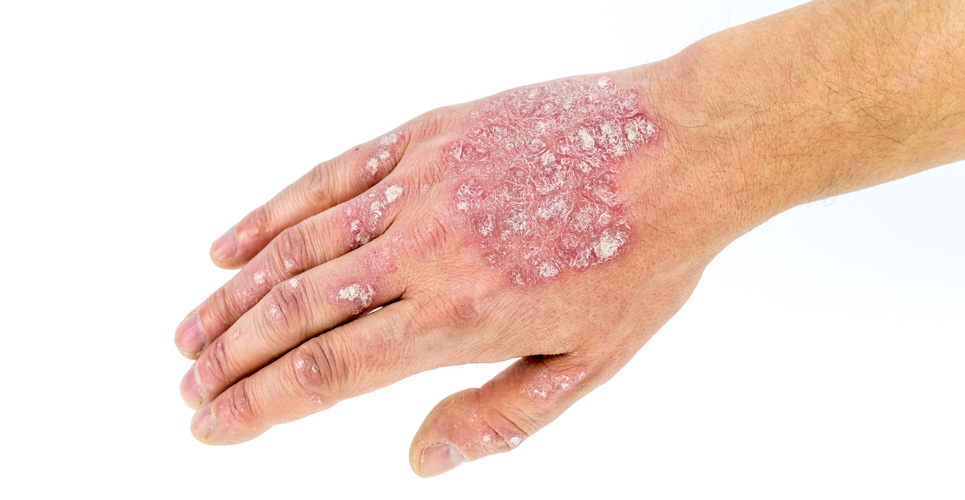↓Article continues below this sponsored advert↓
↑Advertisement↑
Novartis has announced that the Committee for Medicinal Products for Human Use (CHMP) of the European Medicines Agency (EMA) has adopted a positive opinion for the use of Xolair® (omalizumab) as an add-on therapy for the treatment of chronic spontaneous urticaria (CSU) in adult and adolescent (12 years and above) patients with inadequate response to H1 antihistamine treatment.
The recommended dose is 300mg by subcutaneous injection every four weeks.
At any given time, the prevalence of chronic urticaria (CU) is up to 1% of the world’s population,[5] and up to two thirds of these patients have CSU.[5,6] CSU is also known as chronic idiopathic urticaria (CIU) in the US, and is a severe and distressing skin condition characterised by red, swollen, itchy and sometimes painful hives or wheals on the skin that spontaneously present and re-occur for more than six weeks.[3,7,8] Up to 40% of CSU patients also experience angioedema, a swelling in the deep layers of the skin.[4]
“This positive news from the CHMP brings us one step closer to providing an innovative therapeutic option from our specialty dermatology portfolio to people suffering from this chronic and debilitating disease,” said Tim Wright, Global Head of Development, Novartis Pharmaceuticals. “If approved, Xolair will be the first and only licensed therapy in the EU for up to 50% of CSU patients not responding to approved doses of antihistamines.”
The European Commission generally follows the recommendations of the CHMP and usually issues its final decision within two months of the CHMP opinion.
The CHMP opinion was based on positive and consistent results from three pivotal Phase III registration studies (ASTERIA I, ASTERIA II and GLACIAL) that involved nearly 1,000 patients with CSU not responding to antihistamines. Xolair 300mg met all primary and pre-specified secondary endpoints across these studies, which showed Xolair significantly improved itch and hives, including rapid itch relief, and in many cases completely cleared symptoms.[1-3] Quality of life was also significantly improved for patients treated with Xolair 300mg[1-3] across the Phase III study program. Negative effects of CSU on quality of life may include sleep deprivation and psychological comorbidities such as depression and anxiety.[5,9] In these studies, the incidence and severity of adverse events (AEs) was similar between Xolair and placebo recipients.[1-3]
Results from the three pivotal registration studies for Xolair in CSU were announced in 2013. Highlights from these studies that were previously reported include:
In the ASTERIA II study, 44% of patients receiving Xolair 300 mg were itch-and hive-free after 12 weeks of treatment (p<0.0001).[3]
In the ASTERIA I study, Xolair-treated patients experienced a rapid reduction in itch and hives as early as Week 1, with the therapeutic benefit sustained over 24 weeks of active treatment (p<0.0001).[1]
In the GLACIAL study, more than half of patients who had failed multiple therapies including H1 antihistamines (at up to four times the approved dose) and H2 antihistamines and/or leukotriene receptor antagonists (LTRAs) had their symptoms eliminated or suppressed with Xolair 300mg (p<0.001).[2]
Xolair has already been approved for the treatment of CSU in four countries: Egypt, Turkey, Guatemala and El Salvador. Regulatory reviews are currently ongoing in more than 20 countries, including the US, Canada, Australia and Switzerland.
Xolair is being jointly developed by Novartis and Genentech, Inc. for CSU.
About the Pivotal Phase III Xolair CSU Studies
Three pivotal Phase III studies, ASTERIA I, ASTERIA II and GLACIAL, evaluated the efficacy and safety of Xolair in nearly 1,000 CSU patients not responding to antihistamines.[1-3]
ASTERIA I and ASTERIA II were global, multi-centre, randomised double-blind studies that evaluated the efficacy and safety of Xolair compared to placebo. The studies enrolled 323 patients and 318 patients respectively, aged between 12 and 75 with moderate to severe CSU.[1,3] Patients were randomised to Xolair 75mg, 150mg or 300mg or placebo, given subcutaneously every four weeks.[1,3] ASTERIA I had a 24-week treatment period, with a 16-week follow-up and ASTERIA II had a 12-week treatment period, with a 16-week follow-up period.[1,3]
GLACIAL was a 40-week, global, multi-centre, randomised double-blind study that evaluated the safety and efficacy of Xolair compared to placebo. It involved 335 patients aged between 12 and 75 with moderate to severe CSU despite receiving standard-of-care therapy, consisting of concomitant H1 antihistamine therapy (up to four times the approved dose) and other background medications including H2 antihistamines and/or leukotriene receptor antagonists (LTRAs).[2] Patients were randomised to Xolair 300mg or placebo (3:1), given subcutaneously every four weeks for a total period of 24 weeks.[2]
References
- Maurer M. Phase III randomized, double-blind, placebo-controlled study evaluating efficacy and safety of omalizumab in H1-antihistamine-refractory chronic idiopathic/spontaneous urticaria. European Academy of Dermatology and Venereology (EADV) annual meeting 2013. Oral Presentation. 5 October 2013, 11:30 a.m.
- Kaplan A, Ledford D, Ashby M, et al. Omalizumab in patients with symptomatic chronic idiopathic/spontaneous urticaria despite standard combination therapy. J Allergy Clin Immunol. 2013 Jul;132(1):101-9. doi: 10.1016/j.jaci.2013.05.013.
- Maurer M, Rosén K, Hsieh HJ, et al. Omalizumab for the treatment of chronic idiopathic or spontaneous urticaria. NEJM. 2013; DOI: 10.1056/NEJMoa1215372.
- Sánchez-Borges M, Asero R, Ansotegui IJ, et al. Diagnosis and treatment of urticaria and angioedema: a worldwide perspective (position paper). World Allergy Organization Journal. 2012; 5:125-147.
- Maurer M, Weller K, Bindslev-Jensen C, et al. Unmet clinical needs in chronic spontaneous urticaria. A GA2LEN task force report. Allergy. 2011; 66: 317-330.
- Kulthanan K, Jiamton S, Thumpimukvatana N, et al. Chronic idiopathic urticaria: prevalence and clinical course. J Dermatol. 2007;34:294-301.
- Asthma and Allergy Foundation of America (AAFA) website. “Chronic Urticaria (Hives).” http://www.aafa.org/display.cfm?id=9&sub=23&cont=328. Accessed November 14, 2012.
- American Academy of Allergy Asthma & Immunology (AAAAI) website. “Skin Allergy Overview.” http://www.aaaai.org/conditions-and-treatments/allergies/skin-allergy.aspx. Accessed November 14, 2012.
- O’Donnell BF et al. The impact of chronic urticaria on the quality of life. Br J Dermatol. 1997; 136(2): 197-201.
- European Medicines Evaluation Agency. Omalizumab (XOLAIR). Summary of product characteristics. Available at: www.ema.europa.eu. Accessed 7 January 2014.

